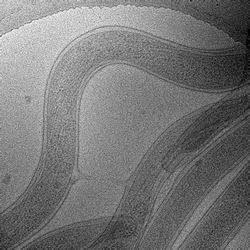 | Professor Emeritus Department of Microbiology and Immunology PhD, Rutgers University, 1972 | |||||
| E-mail: Office: Fax: | jorge.benach@stonybrook.edu (631) 632-4225 (631) 632-9797 | |||||
| Research | The major focus of our research is on the pathogenesis of spirochetal infections and their host responses, particularly in the developmental bactericidal antibodies that work independently of the complement system. These antibodies appear to be more common than previously thought, and may be a very important part of the host repertoire against bacteria.
The tick-borne Borreliae are the causative agents of relapsing fever and Lyme disease worldwide. The clinical manifestations of Lyme disease and relapsing fever can be similar, particularly those involving the central nervous system. Both diseases can also affect the joints and the heart, but Lyme disease lacks the marked and recurrent spirochetemia of relapsing fever. The acute manifestations of relapsing fever are both more severe and evolve more rapidly than those of Lyme disease, but the late manifestations of both diseases are similar. After an incubation period, the spirochetes of relapsing fever disseminate to the bloodstream, causing an observable spirochetemia that is accompanied by fever and other acute signs and symptoms. The spirochetemia of relapsing fever in humans and in murine models is characterized by a large first peak of organisms in the blood several days after spirochete deposition in the skin. The initial spirochetemia is rapidly cleared from the bloodstream by antibodies that drive the subsequent development of several smaller peaks of spirochetemia of antigenically variable organisms. Borrelia spirochetes are motile, helical or ‘wave-like’ microaerophilic organisms with a cytoplasmic inner membrane, a thin peptidoglycan layer, a periplasmic space and an outer membrane. A defining characteristic of spirochetes is the location of the flagella within the periplasmic space. The outer membrane has surface-exposed lipoproteins which are major determinants of the immunogenicity of these organisms and are the outer surface proteins (Osps). The importance of antibodies in controlling spirochetal infections was underscored by the discovery of an antibody with unique bactericidal properties. An IgG1κ murine monoclonal antibody (CB2) specific for OspB of B. burgdorferi was bactericidal in the absence of complement. Formation of the OspB-CB2 complex was dependent on a single lysine of OspB (Lys253) for binding and led to the lysis of the outer membrane of the bacterium. CB2 does not exhibit proteolytic activity against OspB, and structural details of the complex did not lead to a greater understanding of the mechanism of action. Agglutination is not involved since CB2 monovalent Fab fragments and single chain fragments of the variable regions of the antibody also had bactericidal activity. These antibodies were so effective in their bactericidal action that they were used to select Borrelia escape mutants that lacked the critical amino acid for antibody binding and were less infectious. To establish in vivo relevance, a murine model of relapsing fever was used. The hypothesis was that the clearance of the first peak of spirochetemia is mediated by the complement-independent bactericidal antibodies. To test this hypothesis, we used mice with single-gene deficiencies in various components of the immune system to evaluate the effects, if any, of their absence on the removal of relapsing fever spirochetes from the bloodstream. The ability of complement component 5 (C5)- and C3 deficient mice to clear the spirochetemia caused by infection with relapsing fever Borrelia as rapidly and completely as wild-type (WT) mice demonstrated that the terminal membrane attack complex of the three complement pathways is not involved in the removal of the spirochetes from the blood. Both C5- and C3-deficient mice generated IgM antibodies against the spirochete coincident with the clearance of the first peak of spirochetemia, evidence for the essential role of these antibodies in clearing the bacteria from the blood. Likewise, formation of an IgM-C1q complex studied through a deficiency in C1q did not alter the course of spirochetemia. Therefore, the presence of an intact classical or alternative pathway of complement activation is not required to resolve the spirochetemia of relapsing fever. Through these experiments, we demonstrated that complement independent antibodies are the main effectors of clearance of Borrelia, and that antibodies drive the antigenic variation of these species. We are also interested in the interaction of spirochetal outer surface components with host proteases to enhance invasiveness, and to understand how this borrowed proteolytic activity enhances penetration of these organisms into the central nervous system. | |||||


